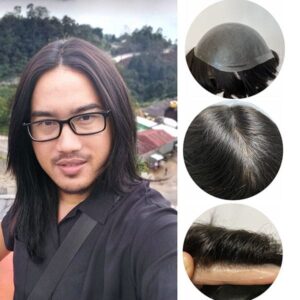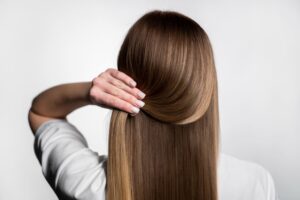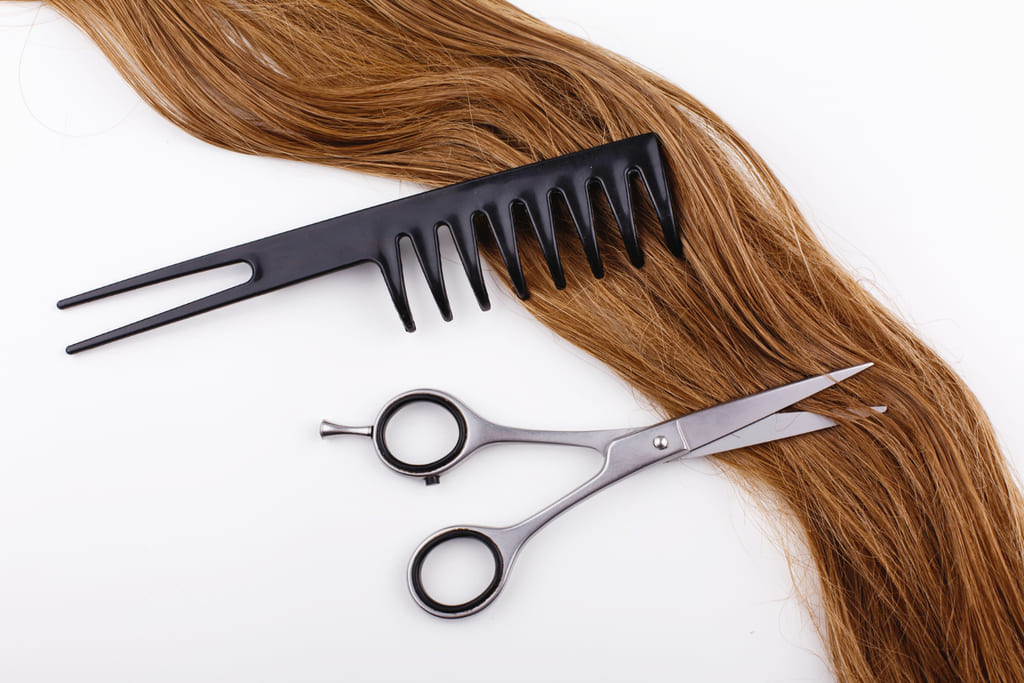
Understanding the medical conditions that cause hair loss
Have you ever seen our catalogue?
Hair is an essential element in determining our perception of beauty. It does not matter if we are men or women, the clichés that describe girls as vain and obsessed with hair care are obsolete.
Even for men, thick, healthy, stroking-worthy hair is a source of pride and nurtures positive body image and instills greater self-image confidence that is conveyed to others. But hair is not only a vehicle to convey charm or a weapon of seduction. It is also an integral part of everyone’s style, just like the way we dress and as such they express a part of our personality.
All of these elements make the sudden onset of a time when hair begins to fall out in amounts that exceed the normal outpouring coincide with a cause for great concern. To understand when this is motivated, it is necessary to know the life cycle of the hair, which, being an annex of the skin, is subject to birth, growth, loss and subsequent regeneration.
Understanding exactly how this ongoing mechanism works means being able to better understand what your hair needs in order to shine and become perfectly healthy again, based on its strengths and weaknesses. In this way you will be able to identify the best products to take care of it, the behaviors to implement to ensure thick and healthy hair and you will learn to distinguish when it is not necessary to be scared. Hair loss is a normal episode, but if an extreme case occurs, it is time to run, because we are dealing with a case of alopecia.
Next we will deal with this topic, we will try to define and understand the medical conditions that cause hair loss and we will see what are the effective medical remedies to counteract or remedy an advanced situation.
Causes of hair loss
Let’s start with the origin, starting from the causes that can explain hair loss. As we mentioned, this is a normal phenomenon, since the hair follows a life cycle that ends at a certain point. However, if you notice that the amount of hair loss is excessive, or the period during which this occurs is too long, you may have a real problem.
In some cases, it’s not too late to intervene, so being able to understand the best products to meet your hair’s needs, while adopting the right behaviors that don’t risk further damaging or weakening your hair, can represent a valid help to delay the effect or, at least, contain it.
In fact, the objective is to avoid, as much as possible, or at least postpone, the moment of the massive fall, since for any man or woman it represents a quite dramatic event. We are losing something that makes us feel beautiful, a symbol of good, of health, an element that makes us proud and that shows others how much we care about our person and the care of our image.
However, most of the time we are faced with a normal phenomenon, determined by the life cycle of the hair, which is naturally divided into three main phases that follow each other. Like all skin appendages, we have a growth phase that can last up to 7 years (called the anagen phase). The second phase is called catagen and consists of a physiologically established gradual interruption of all the main vital functions of the hair, lasting up to 15 days. Finally, we have the terminal (or telogen) phase, also called functional rest, in which the hair ceases to be vital before falling out, after a period of between 90 and 100 days. After the fall, there is room for new hair, which can start its life cycle from a new anagen phase.
Therefore, the first and main cause of hair loss is completely physiological and, considering that the anagen phase can last an average of 3 to 7 years in women and 2 to 4 in men, it is natural and physiological loss hair in the range of 50 to 100 per day. In practice, like all animals, we also have our moult and this means that in the course of our lives each cycle is repeated at least twenty times.

Obviously, however, there are factors that can influence this natural process, which can be significantly affected by different types of environmental, chemical or physical stress, which can speed up or slow down the hair’s life cycle. For this reason, in some people, even 3 months after the triggering event, an increasing loss can be observed, or the opposite phenomenon, with the growth of a large amount of new hair. If the hair loss is noticeable, is prolonged and, above all, is not compensated by the growth of new hair, you are facing the first of these cases.
This means that thick hair begins to thin or even have holes. Then it is the case to request the support of the doctor and select the best products, in order to quickly stop the situation.
Now let’s see in detail the circumstances that can represent a problem that can predispose to alopecia. They are phenomena of an organic, environmental nature or dependent on eating habits and lifestyle.
First of all, the level of certain hormones is extremely important, which can easily negatively affect the life cycle of the hair and promote hair loss. Among the events that present the greatest risk of suffering these changes, we find the period immediately after childbirth and menopause for women, and andropause for men.
Secondly, the substances that we introduce into our body through food also influence the health of the hair. The best foods are those rich in biotin, copper, zinc and vitamin C, all of which are useful nutrients for maintaining healthy hair. On the contrary, crash diets can be extremely harmful, with the risk of promoting a sharp fall.
Regarding lifestyle, risk elements can be external and uncontrollable, such as stress, both mental and physical. The unfortunate implications of this circumstance are observable up to 3 months later, which coincides with the traditional 90-100 days of the telogen phase, necessary to create a readjustment and prepare for new growth.
A period of intense study, work overload, but also excessive exposure to the sun and the frequent use of hats to protect against heat or cold can be sources of capillary stress. Other factors, on the other hand, depend directly on our control, such as alcohol intake or smoking, which favor both oxidative and organic stress, with the risk not only of damaging the health of the hair, but that of the entire organism.
Finally, in addition to endogenous factors, there are external circumstances capable of making a significantly negative contribution. We mention excessive exposure to the sun, but equally negative are pollution, hairstyles and products that can act aggressively on the skin while we use them precisely to care for the hygiene of our hair. Often, in fact, we do not pay much attention to the shampoo we buy, and we buy one that is not suitable for our scalp, an essential part of determining the health of the hair.
How do medical conditions affect hair loss?
Leaving aside the physical and emotional shocks, which can cause damaging but only temporary effects on the hair, we now go more into the merit of the organic causes that can be the basis of conspicuous hair loss, or the passing of the fateful threshold of hair loss, 100 per day, and the limit beyond which the growth of new bulbs fails to replace the loss. In fact, sometimes particular medical conditions, physiological situations or even some diseases can occur that can strongly interfere with this balance.
An example is the time of pregnancy, which determines many changes in the scalp. So much so, that many women notice that they have thicker, more beautiful hair and healthier hair in general. After birth, or in any case within a few months, the situation is reversed, and it is that a great loss prevails that determines the return to normality and stabilization.
This occurs due to completely peculiar hormonal cycles that occur between pregnancy and childbirth, but similar events can occur in the course of life for various reasons. For example, menopause, as well as thyroid problems, can cause permanent or temporary hair loss. In particular, the irregularity in the hormonal cycle and the imbalances caused by a problematic functioning of the thyroid can be the cause of dry hair, which takes on a frizzy appearance and does not maintain its original softness. Due to hypothyroidism, but also hyperthyroidism, they can become thin and weak to such an extent that they fall out in large numbers.
A specific form of alopecia is areata, closely related to the immune system and causing irregular thinning. In addition, situations such as scalp infections (for example, ringworm) may also occur, which require the intervention of a doctor. Diabetes, on the other hand, can lead to an infection of the hair follicle which, when weakened, will cause the hair to fall out. Hence the need to keep the sugar level under control.
Also, let’s not forget that the hair is an appendage of the skin, and as such it can easily suffer due to the presence of diseases that affect the skin. An example for all is systemic lupus erythematosus, an autoimmune disease that in many of the patients who suffer from it presents with different types of skin manifestations, in addition to affecting numerous organs, both vital and not.
The production of autoantibodies can result in a systematic attack on the body, which does not even spare the blood vessels. By compromising its correct functionality, lupus can lead, among its many consequences, to generalized hair loss, which can fall out without leaving any signs. In addition, the same drugs used to treat this condition (immunosuppressants and glucocorticoids) can contribute to temporary hair loss.
Hair loss, if it occurs in certain ways, can still be a cause for concern or suspicion of another disease. In particular, a woman who persistently notices the progress of a receding hairline may be witnessing the onset of frontal fibrosing alopecia. In these cases, prompt treatment can be an effective solution to prevent the situation from getting worse. On the contrary, if the loss occurs in patches and suddenly, and becomes more evident when combing or washing, it is necessary to request a trichological consultation to outline a more precise picture of the situation.
Finally, there are medical conditions that are imposed to combat other types of diseases, such as immunosuppressive drugs, chemotherapy or radiotherapy, used as cancer treatments, which cause substantial hair loss as a very common effect. To get an idea, hair loss due to cancer, which occurs after taking drugs, usually stops, and after a period of between six months and a year it grows back completely.
But there are also other drugs that can predispose to hair loss, such as those used to treat arthritis, heart problems and hypertension, gout and depression.

Hair loss treatments
Having discussed and identified the causes, let us now move on to identify possible remedies for hair loss. If it is a condition that lasts over time, we can count on different types of solutions, which include pharmacological or surgical interventions.
Medications against hair loss
We have just talked about the existence of drugs that can negatively interfere with the hair’s life cycle, causing hair loss, but there is also a drawback. Some specialty medications are remedies for alopecia, even though their effectiveness is largely determined by the specific cause of the alopecia. Generally, the results are better in less serious cases, that is, if they are taken when the problem has not yet reached a certain level of severity.
Specifically, the Food and Drug Administration (FDA), the US body responsible for evaluating the safety of drugs and food, has approved the use of minoxidil for the treatment of androgenetic alopecia and areata. In the first case, it is common baldness, which men reach mainly due to a combination of hormonal factors and genetic predisposition. The result is a generalized hair loss that continues progressively, saving some areas, which coincide with the nape of the neck and the lower part of the temples.
Alopecia areata, on the other hand, involves a sudden but limited fall, confined to small patches, which form bald areas with a rounded shape. Again we have a genetic component that determines the causes, along with an autoimmune one. In both situations, you can benefit from the use of minoxidil, which can be found on the market in the form of a 2% or 5% pure foam or lotion, which should be distributed on the scalp twice a day. To observe the first results, it is necessary to wait 3 or 4 months in which the treatment is carried out regularly.
However, as soon as the use of the drug is discontinued, the improvements disappear, making it a therapy that must be taken for life. Precisely because of this fact, it is necessary to carry out an evaluation after the first 6 months. If the results obtained are not satisfactory, it is possible to stop taking it. Side effects that can occur should also be carefully considered, which commonly include skin irritation, ranging from itchiness to dermatitis, as well as dryness of the scalp that can lead to flaking.
Finasteride is also approved against androgenetic alopecia, and in a good percentage of cases it allows positive effects to be achieved, slowing down hair loss and favoring the growth of new hair from follicles that have not yet completely atrophied. The time needed to see obvious benefits, even in this case, is about 12 weeks, provided that the tablets have been taken regularly and continuously.
The drug’s mechanism of operation acts at the hormonal level, inhibiting the conversion of testosterone into its by-product, dihydrotestosterone, which represents a particularly important risk factor for baldness. It is a drug that does not cause significant problems to the patient’s health, but can have bothersome side effects in the sexual sphere, which include a slight decrease in libido, erectile dysfunction and decreased volume of ejaculate. However, in the case of women, the intake of finasteride during the childbearing age is strongly discouraged, since it could cause serious harm to the fetus in the event of pregnancy.
Finally, we have corticosteroids, also used for the two types of alopecia described above, administered orally or parenterally in severe cases, but more often topically. In this case, the action of the drug is based on its anti-inflammatory and immunosuppressive properties, thanks to the use of betamethasone and triamcinolone. Since the application is mainly done topically, the most common side effects affect the skin and can include burning, irritation or pain at the application site.
Surgical treatments
The second category of treatments refers to the surgical ones, which can also be implemented in combination, evaluating case by case the adaptation to the individual patient and the characteristics of their alopecia.
Together with the scalp reduction techniques, which allow the hairless parts to be reduced, we find the hair transplant, which consists of the transposition of hair obtained from an area of the scalp, extracted from a donor area of the subject himself, coinciding with the neck. From here, the hair bulbs are selected to be implanted with micrografts under local anesthesia in the areas most in need of thickening.
Then the part of the neck where they were taken is sutured in such a way that over time the scars heal completely and are not visible. The results are definitive, excellent and arouse a completely natural effect, although several operating sessions are often required for optimal filling. In fact, it is considered the most reliable intervention, which compared to old technologies has the advantage of naturalness and firmness, since the transplanted hair will not undergo secondary loss.
The operation is also suitable for non-serious cases in which partial thickening or filling of some thinning areas, the hairline or the nape area is sought.
In addition, there is also the possibility of using skin expanders. It involves inserting a prosthesis under the scalp provided with hair bulbs, and then removing this expansion that will cover the part without hair.

How can Newlacu help you?
Given the numerous possibilities that we have listed, we must in any case emphasize that, neither among pharmacological nor surgical interventions, is there a miraculous cure that is capable of returning the person to the situation prior to the onset of alopecia. However, there is one last option, promoted by Newlaecu, which is presented as a completely painless and non-invasive solution, the hair prosthesis.
This term refers to a modern implant, which is based on a particularly innovative technology and provides for an ad hoc realization, directly tailored to the individual patient. It is well suited to be applied in all areas that have suffered extreme thinning, using a membrane that can be both natural and artificial as support.
Although the objective pursued and the concept behind this treatment is in all respects superimposable on the one that gave rise to the birth of wigs, the final result is very different, both in terms of the natural effect and the comfort obtained. In addition, the hair prosthesis guarantees immediate results that, however, can be reversible in case you change your mind.
However, this is a diaper technology that needs to grow but, at the same time, already promises satisfactory results thanks to the development of new types of membranes, designed to be more resistant to external factors that can attack them but also thinner, consequently improving adhesion to go unnoticed, as long as they are placed by an expert.
In short, the hair prosthesis opens new paths in the world of alopecia, offering more possibilities to people who suffer from it but do not want to give in to losing their hair, proposing a non-invasive solution that does not require surgerybut does guarantee excellent results and a completely natural effect.

Xiufei Wu
Xiufei Wu is an expert in hair restoration and has been working in this field for more than 20 years. She has an engineering degree from Qingdao University of Science and Technology with honors (1998). In the year 2000 he began working on the creation and commercialization of hair prostheses and wigs and then in 2005 he founded his personal company New lacecu wig co, which today has hundreds of companies (hairdressers and wig shops) among its clients and thousands of private customers. She today is considered one of the leading experts in China in the manufacture and marketing of hair prostheses and wigs.
Lascia un commento
About us
NewLacecu is an italian owned business located in China. Launched in 1995, we have been committed to providing our customers with the best lace wig and hair pieces at affordable prices. All our products are handmade with the highest quality human hair, 100% certified.
Our mission is to bring our customers the highest quality in human hair replacement systems. We only use the best materials in the market and we ensure quality control by constantly developing and using strict methods at every single step of hair pieces manufacture.





